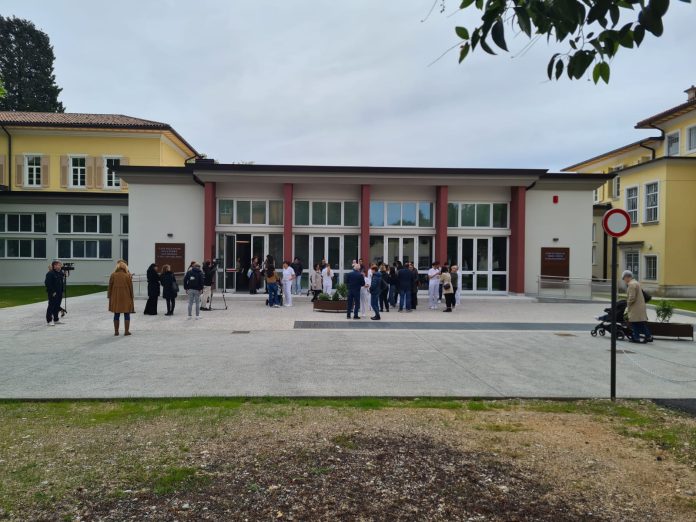by InTrieste
In a landmark moment bridging healthcare initiatives between Italy and Slovenia, the inauguration of the House of Health, Women, Infancy, and Adolescence stands as a modern testament to addressing the evolving health needs of communities on both sides of the border.
The ribbon-cutting ceremony, graced by regional Health assessor, underscored the facility’s role in transcending geographical boundaries and pioneering a multidisciplinary healthcare approach, particularly in the crucial pre-birth phase. Situated within the Basaglia Park of Gorizia, this state-of-the-art facility represents a culmination of over a decade of planning and a significant investment totaling 2.5 million euros, with a notable contribution of 500 thousand euros from the Interreg Italy-Slovenia program managed by the Gect of Gorizia.
Operated by Asugi, the facility serves the tri-national areas of Gorizia, Nova Gorica, and Sampeter, offering a comprehensive array of services including offices, outpatient clinics, obstetrics area, counseling zones, and recreational spaces. Notably, the House boasts a wellness area complete with a pool catering to expectant mothers and young families.
Today’s inauguration not only celebrates a new era in healthcare provision but also reflects a strategic pivot in regional healthcare policy. With the closure of the Gorizia maternity ward, this initiative, spearheaded by forward-thinking leadership, signals a paradigm shift towards optimized resource allocation and a more holistic, community-centric healthcare model.
The event, attended by a diverse array of dignitaries including representatives from municipal councils of Gorizia and Nova Gorica, as well as the general manager of Asugi, garnered significant public interest, underscoring the profound impact of this cross-border collaboration on the local populace.
In the words of the regional assessor, this momentous occasion serves as a poignant reminder of the imperative to embrace innovation and anticipate evolving healthcare needs, transcending the constraints of tradition in favor of a more sustainable and inclusive future.





























